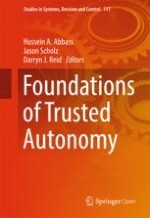6.1 Introduction
-
Radical novelty—novel behaviour occurs that cannot be predicted.
-
Coherence or correlation—the novel behaviour has some level of coherence over time.
-
Global or macro-level behaviour—coherence occurs at the macro level.
-
Dynamical—the macro-level, while having some coherence in time, also evolves over time.
-
Ostensive—emergent behaviours are recognised ostensively, i.e. by showing themselves.
Type | Name | Predictability | Example |
|---|---|---|---|
I | Nominal/ Intentional | Predictable | Ordinary machines such as clocks or steam engines |
II | Weak | Predictable in principle | School of fish, flock of birds |
III | Multiple | Not predictable | Stock markets, pattern formation in nature |
IV | Strong | Not predictable in principle | Life and culture |
